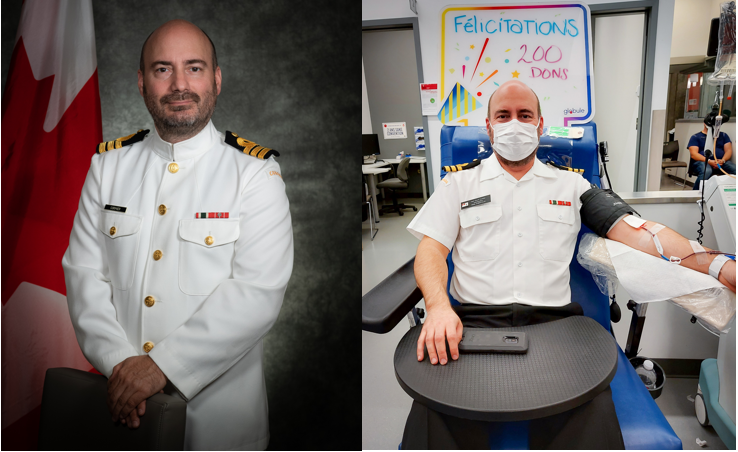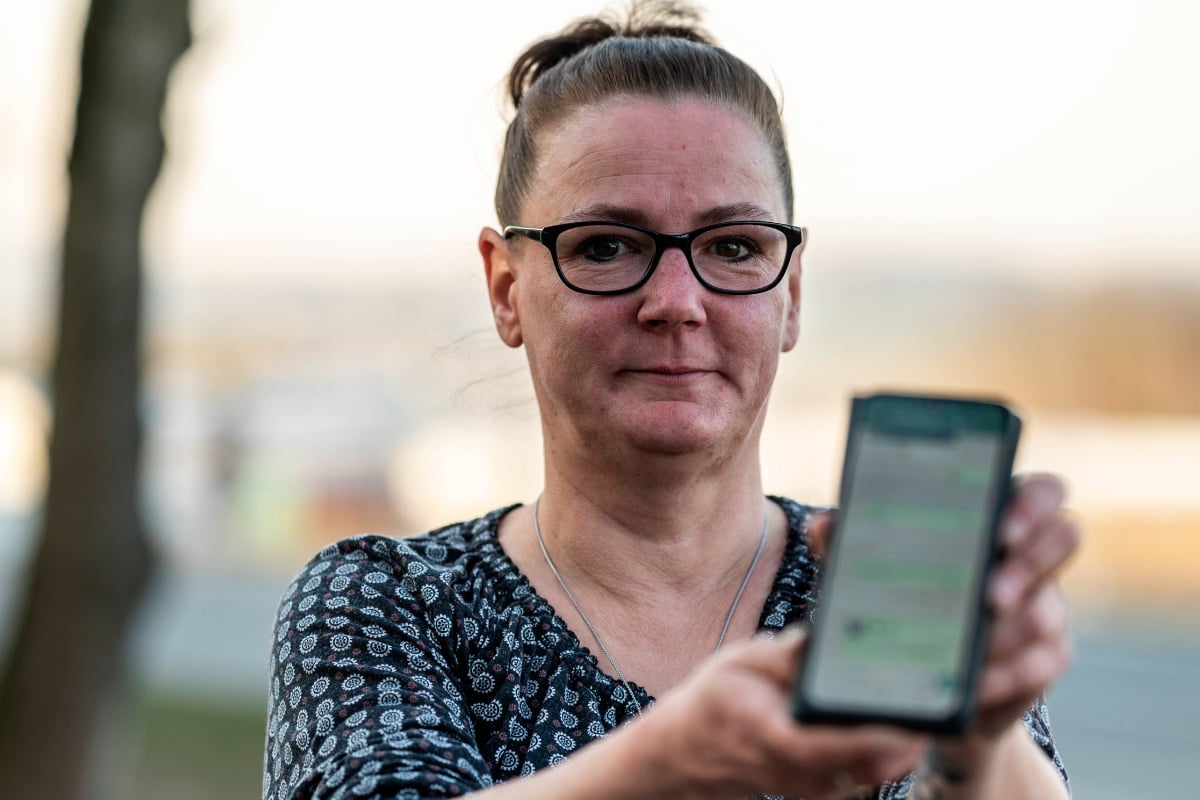The unit commander of the Reserve HMCS d’Iberville de RimouskiClaude Cormier, is an emeritus blood donor, who has just over 200 donations to his credit.
Commander Cormier wanted to testify to the importance of the cause, as he will be the guest of honor at the HÉMA-Québec blood drive that will take place at the Rimouski Naval Reserve unit on March 28, 29 and 31. Although the appointments are full for the upcoming collection, Claude Cormier spoke with the Evening Newspaper to talk about his journey, the reality of being a blood donor and what motivates him to continue.
A busy journey
Since the beginning of his career, Commander Claude Cormier has had the opportunity to travel and try out various positions: “I joined the naval reserve in 1990 as a naval warfare officer and then in the years 2000 I changed profession to become an intelligence officer and since that time I have been working as an intelligence officer. »
He was also a recruiting officer in British Columbia for HMCS MALAHAT and taught in Tunisia for the Tunisian Navy.
His career on the civilian side was marked by his studies in nursing in Quebec. He then worked at HÉMA-Québec for a period of two years as a mobile collection supervisor and was coordinator for organ donations.
These are just a few highlights of his career and what led him to become Commanding Officer of HMCS d’Iberville in Rimouski.
Blood collect
The first of his 200 or so blood donations dates back to when Claude Cormier was a student: “I was still a nursing student, the first time I gave blood. I believe the organization was still called the Red Cross and it was the only donation I made with the Red Cross before it changed its name to HÉMA-Québec. »
He says that despite his fear, he was impressed to see how donated blood can be used to save lives. What motivated him all the more to continue his donations was the way his donations served the pediatric clientele for a long time: “I entered the plasma program after working with HÉMA-Québec and I donated blood for pediatric patients. In my blood I had CMV which was negative, which happens to be cytomegalovirus. I had not been exposed to this until very recently and for several years my blood was used, among other things, to give to pediatric patients, so it was a bit of an incentive for me to donate blood. »
A long process
“When that ended – because when I became CMV positive I couldn’t donate pediatrics anymore – that’s when I started donating plasma and platelets. At that time, I was able to donate platelets every two weeks, so things were going fairly quickly to increase the number of donations. But it still takes several years, it’s still been about twenty years since I started giving blood, so even every two weeks, and sometimes it wasn’t possible to go every two weeks, so in short I managed to get to that number,” continued Mr. Cormier.
He says that on some occasions he was called to donate blood to specific people: “In all of this, there were times when I was called for specific recipients. Without knowing the names of these people, I knew I could give to a 12 year old and pediatric care, even though I was CMV positive. In those cases, my blood was really compatible with them. Sometimes there are people who can develop antibodies to the blood they receive and only certain people can give them so I lived this experience for a few months and when it’s over, we ask ourselves always the question: what happened? »
Despite the uncertainty as to what may happen to the person, Claude Cormier still hopes that his blood will have been enough to cure the person or at the very least, that it will have allowed him to have quality time with his family. “That’s what motivates me to donate blood and to go further because 200 donations doesn’t end there, it will continue. »
Local blood donors
Claude Cormier wanted to take advantage of the interview with Le Journal to highlight the generosity of people here: “In the Rimouski region, we have very good donors. We have 247 people who gave more than 50 times, 23 people who gave more than 100 times, 5 people more than 150 times and another person (other than me) who gave more than 200 times and this person has given 300 times. »
“The blood drives in Rimouski are among the largest in Quebec: not all blood drives in Quebec are able to reach their donation goal, and HÉMA-Québec relies a lot on the generosity of the people of Lower -Saint-Laurent to be able to supply the health network with blood,” concludes the commander.
This is all the more important, knowing that HÉMA-Québec needs about a thousand donations a day and that each donation can save four lives.
–


